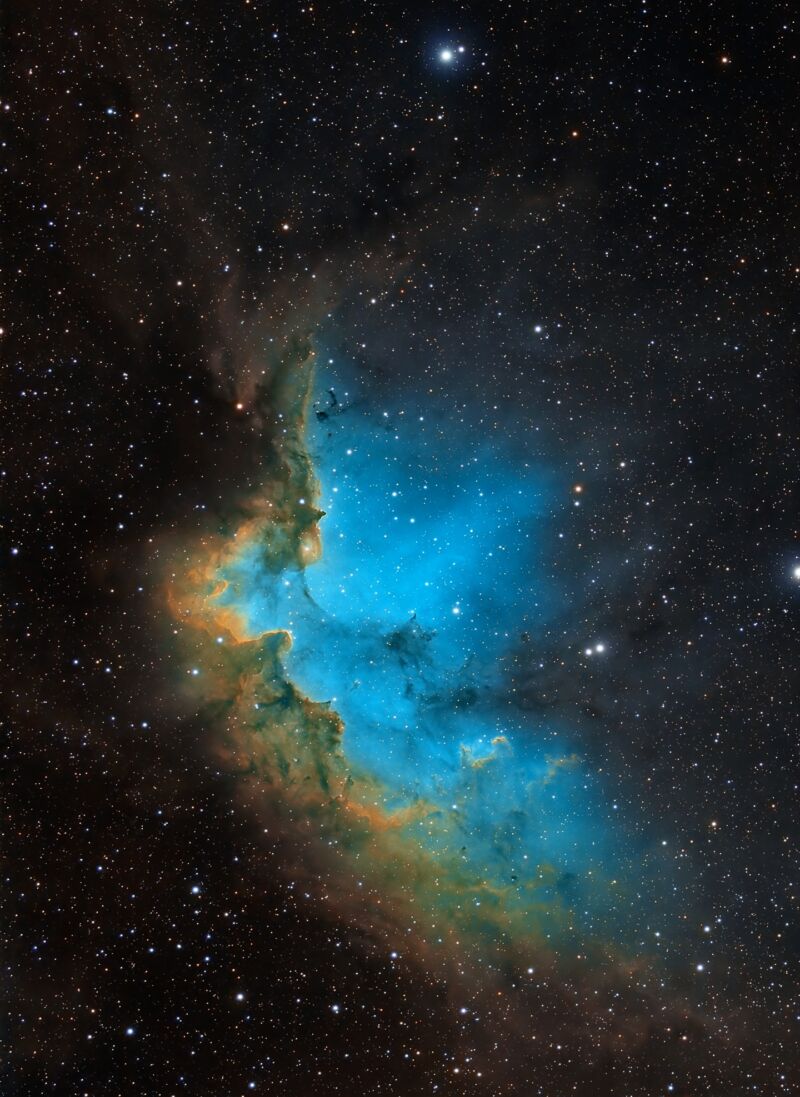
George Amanakis
Good morning. It’s January 6, and today’s image features a newish star cluster in the constellation Cepheus.
The stars in this cluster are relatively young, estimated at an age of about 4 million–12 million years old. The cluster is formally known as NGC 7380, and the feature is known more informally as the Wizard Nebula. It was first reported by German astronomer William Herschel, who said it was discovered by his sister, Caroline Herschel, in 1787.
The Herschels were born in Hanover, Germany, so fittingly, today’s submission comes from an amateur astronomer in Hanover, George Amanakis. He described his process, with a total integration time of 36 hours, as follows, “I acquired RGB for stars for a more star-full composition. So the process was: SHO->starless->starless+RGB stars. I used a 5-inch triplet apochromatic refractor and a monochrome camera.”
It certainly looks like a wizard’s magic to me.
Source: George Amanakis
Do you want to submit a photo for the Daily Telescope? Reach out and say hello.

